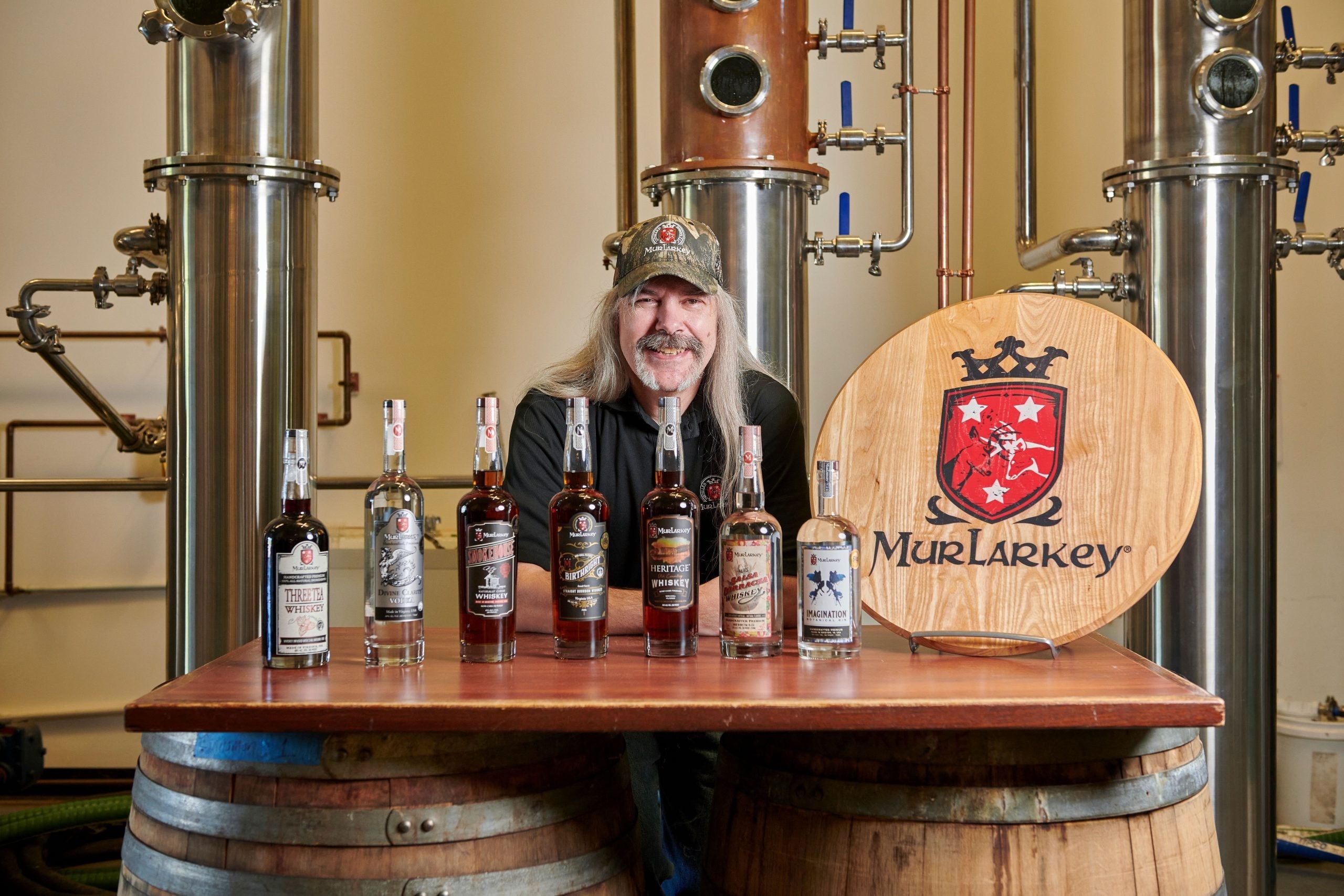
Distiller for a Day
What’s it like? A day in the life of a distiller…
Find out with MurLarkey Distilled Spirits Head Distiller, Kevin Szady, who crafts a number of international gold-winning liquors!
Kevin, can you tell us what your typical day is like?
I distill Vodka, Gin, Whiskey and Bourbon. So, my days definitely vary. I’ll talk about Bourbon here because I get asked about it frequently.
Most bourbon production days start with turning the steam on to the 500 gallon combination pot-reflux column still. This starts heating up the fermented mash. Turn on the agitator (the big mixing arm) to ensure the grains are suspended in the liquid and don’t scorch from the heat.
While waiting for the fermented mash to heat up to 173 degrees Fahrenheit (the temperature where alcohol starts to boil), the steam is turned on to the mash tun. Corn and rye is then added to the 350 gallons of water that is in the mash tun and the mash heats up. We’ll need to add Apple and Cherry wood smoked malted barley to the mash. The mash will then go through several processes including gelatinization, liquefaction and saccharification before all of the starches are converted to fermentable sugars.
While the mash is heating up in the mash tun, the alcohol starts boiling in the still and the vapor passes through the whiskey column before being collected in a collection tank. We taste through the heads, hearts, and tails, determining when to make these cuts. Tasting the whiskey throughout the process is the hard part about this job – You have to love quality control!
What are heads, hearts and tails?
Heads are at the beginning of the run and have more low boiling point alcohols and even compounds like acet which you don’t want to drink. Hearts are the middle of the run and are what we want to drink. Tails are the end and contain more fusel oils. There is an art to determining what to take to get the desired flavor.
What do you do while the mash is cooking? Does it take long?
It can take awhile, so while the mash is cooking and the alcohol is running through the still, I will typically dump a barrel of already aged whiskey from our rickhouse, find out what the proof is on the whiskey, and then proof it down to bottling proof.
I pull samples of different ages of bourbon and whiskey from barrels in our rickhouse to see how the aging process is going. Another fun part about the job!
I may also use that cooking time to char a local red wine barrel in the parking lot for our Heritage whiskey by pouring some 170 proof whiskey into the barrel and lighting it on fire.
At the end of the day when we have converted all of the starches on the mash to fermentable sugars we pump it into a fermenter and wait for it to cool down before adding yeast to convert the sugars into alcohol. We also determine how much bourbon white dog we collected off of the still. Then its time for a cocktail!
You teach a Distiller for a Day class at MurLarkey – do people get to light barrels on fire?
Ha! Yes they do! They get to do most of what I just described and we spend a full day together. It’s very hands on and informative. We have a great time!